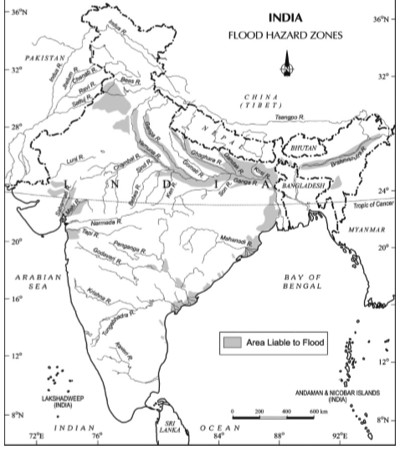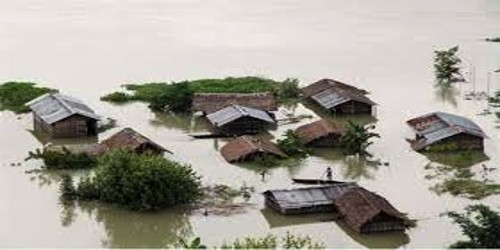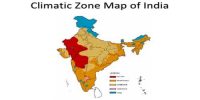Consequence and Control of Floods in Indian Subcontinent
Floods occur commonly when water in the form of surface run-off exceeds the carrying capacity of the river channels and streams and flows into the neighboring low-lying floodplains. Floods can also be caused due to a storm surge (in the coastal areas), high-intensity rainfall for a considerably longer time period, melting of ice and snow, reduction in the infiltration rate and presence of eroded material in the water due to a higher rate of soil erosion.
Frequent inundation of agricultural land and human settlement, particularly in Assam, West Bengal, Bihar, and Eastern Uttar Pradesh (flooding rivers), coastal areas of Orissa, Andhra Pradesh, Tamil Nadu, and Gujarat (cyclone) and Punjab, Rajasthan, Northern Gujarat and Haryana (flash floods) have serious consequences on the national economy and society. Floods do not only destroy valuable crops every year but these also damage physical infrastructures such as roads, rails, bridges, and human settlements. Millions of people are rendered homeless and are also washed down along with their cattle in the floods. Spread of diseases like cholera, gastroenteritis, hepatitis and other water-borne diseases spread in the flood-affected areas.

Fig: Flood Hazard Zones
However, floods also make a few positive contributions. Every year floods deposit fertile silt over agricultural fields which are good for the crops. Majuli (Assam), the largest reverie island in the world, is the best example of good paddy crops after the annual floods in the Brahmaputra. But these are insignificant benefits in comparison to the grave losses.
The Government of India, as well as the state governments, is well aware of the menace created by floods every year. How do these governments generally respond to the floods? Construction of flood protection embankments in the flood-prone areas, construction of dams, afforestation and discouraging major construction activities in the upper reaches of most of the flood-creating rivers etc. are some steps that need to be taken upon urgent basis. Removal of human encroachment from the river channels and depopulating the floodplain can be the other steps. This is particularly true in western and northern parts of the country which experience flash-floods. Cyclone centers may provide relief in coastal areas which are hit by a storm surge.















